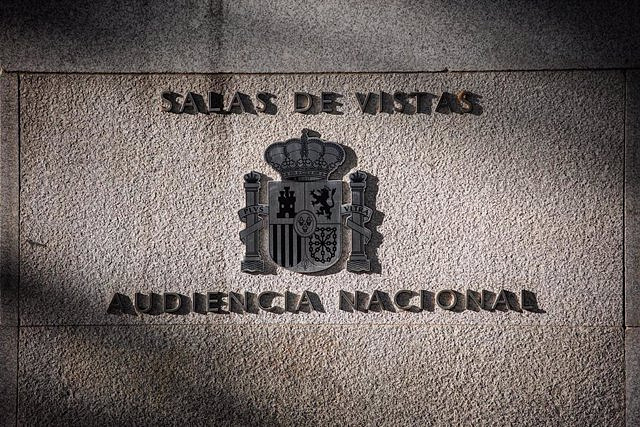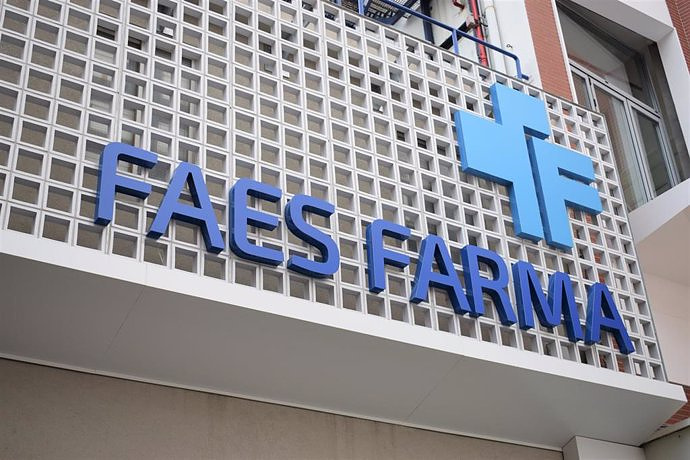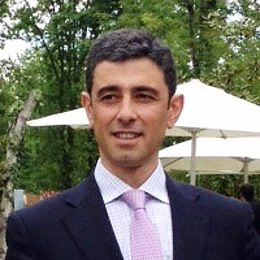He asserts that the gang's pyramid structure made the leadership participate in the attack strategy.
MADRID, 4 Oct. (EUROPA PRESS) -
An intelligence report from the General Information Commissariat (CGI) reveals that the Buruhauste command of ETA, responsible for the car bomb murder in October 2000 of Supreme Court magistrate Francisco Querol, was carrying out direct orders from the Executive Committee.
This new document would support the thesis of the Dignity and Justice victims' association that the heads of the different ETA apparatuses would have criminal responsibility as indirect perpetrators. Thesis that has caused the National Court to open different investigations to study this possibility.
In this report of more than 300 pages and to which Europa Press has had access, the agents review the criminal career of all the leaders of the terrorist gang at the time of the attack, they explain that the gang had a hierarchical structure and in Its conclusions assert that this command "followed the instructions of its military leaders" and was also in charge of deploying "the military strategy planned by ETA in the capital of Spain during the time it remained active (October 1999-November 2001)."
In fact, they point out that this strategy was designed "collegiately and unanimously by all ETA members who made up its Executive Committee at that time" --ZUBA-- and that its functions included "not only the determination of the strategic line political and military, but also the design, planning, coordination, direction and sometimes also the order or authorization to carry out the terrorist attacks that were carried out by the operational commands."
The document points out that when the attack occurred, and as can be seen from statements by ETA members, court rulings and internal documents of the terrorist group, including several songs or self-criticisms, the top officials of each structure were Javier García Gaztelu, Juan Antonio Olarra Guridi and Ainoa Múgica Goñi in the Military Apparatus; Ignacio Miguel Gracia Arregui and Asier Oyarzabal Chapartegui in the Logistics Device; Mikel Albisu Iriarte and Vicente Goicoechea Barandiaran in the Political Apparatus; Ramón Sagarzazu Gaztelumendi at the International Apparatus; and Maria Soledad Iparraguirre, in the Finance Department.
According to the CGI, these members of the leadership also had the function of choosing the members who made up the liberated commandos, their geographical area of implementation and targets to attack. "In this case, his decision was the creation of the 'Buruhaste' commando to carry out its criminal activity in Madrid from the end of 1999, until it was dismantled on 11/06/2001," he asserts.
In addition, he points out that the members of ZUBA - the leadership - were also in charge, through the structures they directed, of providing the necessary personal and material means to the armed operational commandos to carry out the attacks.
Like other police reports presented in cases such as that of Miguel Ángel Blanco, in this one the Police dedicates a large section to explaining that ETA was an "extremely structured and hierarchical" organization, in which its members had a task entrusted to them and a person in charge. who were accountable for that performance.
"This person in charge transmitted to them the orders emanating from another senior person or directly from the management body," he points out, adding that the structure was "very closed and almost military in nature," and that each member of ETA depended on one person in charge and that on another. higher, "in a pyramidal chain."
And in this context, the Police conclude that all the militants knew of the existence of the Executive Committee and that the orders of each person in charge were followed "in the conviction that it was not a personal order, but rather responded to a plan prepared by the head of the organization, that board of directors that was the Executive Committee or ZUBA".
To this he adds that in the band "a strict discipline prevailed" through which they tried to avoid betrayals, desertions, denunciations, lack of observance of the imposed security measures or critical positions, and remember that both the sanctions and the consequences were arbitrary. and that on some occasions the disciplinary measure was the execution of the militant.
In short, the report indicates that the choice that a militant had once he decided to join ETA was null, and that his future and even his departure from the organization now depended only on the leadership.
The document presented before the head of the Central Court of Instruction number 5, Santiago Pedraz, who is investigating this specific case, dedicates an epigraph to the command responsible for the attack against Querol and remembers that the material authors were Juan Luis Rubenach, Ana Belén Egües and Gorka Palacios , while Oier Goitia carried out the necessary preparatory acts.
He specifies that Egües' statement and his song (or self-criticism) were key to knowing "the formation, implementation, infrastructure, actions, modus operandi, displacements, information tasks, organic dependency, military leaders and other elements" of this command "especially in relation to the time of the attack.
"Ana Belén Egües's statement is completely true since it fully coincides with the content of her song, even in this last document she provides more data than in the first in her eagerness to inform those responsible for ETA of all the data referred to. to the command's activity for the sake of the security of the organization and its militants," he clarifies.
And he concludes by maintaining that this commando commando "following the instructions of its military leaders" was in charge of deploying ETA's military strategy in Madrid. Strategy that, he insists, was "designed in a collegial and unanimous manner by all ETA members who made up its Executive Committee at that time."
It should be remembered that in that attack, in addition to the judge of the Military Chamber of the Supreme Court, who was the target, his driver, Armando Medina, lost his life; the national police officer Jesús Escudero; and a driver from the EMT – municipal bus company – named Jesús Sánchez. Another 30 people were injured.

 Exploring Cardano: Inner Workings and Advantages of this Cryptocurrency
Exploring Cardano: Inner Workings and Advantages of this Cryptocurrency Seville.- Economy.- Innova.- STSA inaugurates its new painting and sealing hangar in San Pablo, for 18 million
Seville.- Economy.- Innova.- STSA inaugurates its new painting and sealing hangar in San Pablo, for 18 million Innova.- More than 300 volunteers join the Andalucía Compromiso Digital network in one month to facilitate access to ICT
Innova.- More than 300 volunteers join the Andalucía Compromiso Digital network in one month to facilitate access to ICT Innova.-AMP.- Ayesa acquires 51% of Sadiel, which will create new technological engineering products and expand markets
Innova.-AMP.- Ayesa acquires 51% of Sadiel, which will create new technological engineering products and expand markets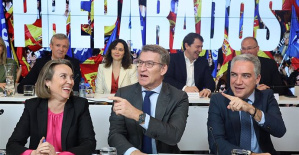 The PP sees the concentration of support for Sánchez in Ferraz as a "failure" and believes that it "complicates" the story of its continuity
The PP sees the concentration of support for Sánchez in Ferraz as a "failure" and believes that it "complicates" the story of its continuity Marc Márquez returns to pole in Jerez
Marc Márquez returns to pole in Jerez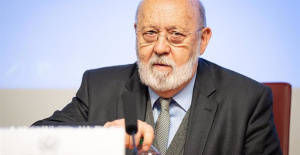 The CIS carries out a quick survey on Sánchez's letter to measure the reaction of citizens
The CIS carries out a quick survey on Sánchez's letter to measure the reaction of citizens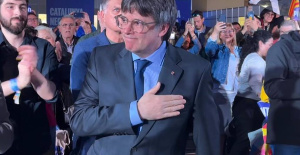 12M.- Puigdemont to Sánchez and Illa: "This is not about the future of the PSOE! What have you believed?"
12M.- Puigdemont to Sánchez and Illa: "This is not about the future of the PSOE! What have you believed?" How Blockchain in being used to shape the future
How Blockchain in being used to shape the future Not just BTC and ETH: Here Are Some More Interesting Coins Worth Focusing on
Not just BTC and ETH: Here Are Some More Interesting Coins Worth Focusing on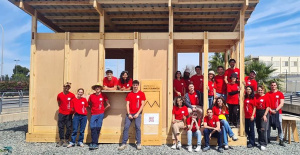 UPV students build a prototype of a wooden house to move to Equatorial Guinea
UPV students build a prototype of a wooden house to move to Equatorial Guinea The UA opens the call for the Impulso 2024 Awards for the best innovative business initiatives
The UA opens the call for the Impulso 2024 Awards for the best innovative business initiatives ALI, virtual assistant from Alicante, internationally recognized by the OECD
ALI, virtual assistant from Alicante, internationally recognized by the OECD Retrópolis brings the golden age of video games and computing to the UPV
Retrópolis brings the golden age of video games and computing to the UPV A million people demonstrate in France against Macron's pension reform
A million people demonstrate in France against Macron's pension reform Russia launches several missiles against "critical infrastructure" in the city of Zaporizhia
Russia launches several missiles against "critical infrastructure" in the city of Zaporizhia A "procession" remembers the dead of the Calabria shipwreck as bodies continue to wash up on the shore
A "procession" remembers the dead of the Calabria shipwreck as bodies continue to wash up on the shore Prison sentences handed down for three prominent Hong Kong pro-democracy activists
Prison sentences handed down for three prominent Hong Kong pro-democracy activists ETH continues to leave trading platforms, Ethereum balance on exchanges lowest in 3 years
ETH continues to leave trading platforms, Ethereum balance on exchanges lowest in 3 years Investors invest $450 million in Consensys, Ethereum incubator now valued at $7 billion
Investors invest $450 million in Consensys, Ethereum incubator now valued at $7 billion Alchemy Integrates Ethereum L2 Product Starknet to Enhance Web3 Scalability at a Price 100x Lower Than L1 Fees
Alchemy Integrates Ethereum L2 Product Starknet to Enhance Web3 Scalability at a Price 100x Lower Than L1 Fees Mining Report: Bitcoin's Electricity Consumption Declines by 25% in Q1 2022
Mining Report: Bitcoin's Electricity Consumption Declines by 25% in Q1 2022 Oil-to-Bitcoin Mining Firm Crusoe Energy Systems Raised $505 Million
Oil-to-Bitcoin Mining Firm Crusoe Energy Systems Raised $505 Million Microbt reveals the latest Bitcoin mining rigs -- Machines produce up to 126 TH/s with custom 5nm chip design
Microbt reveals the latest Bitcoin mining rigs -- Machines produce up to 126 TH/s with custom 5nm chip design Bitcoin's Mining Difficulty Hits a Lifetime High, With More Than 90% of BTC Supply Issued
Bitcoin's Mining Difficulty Hits a Lifetime High, With More Than 90% of BTC Supply Issued The Biggest Movers are Near, EOS, and RUNE during Friday's Selloff
The Biggest Movers are Near, EOS, and RUNE during Friday's Selloff Global Markets Spooked by a Hawkish Fed and Covid, Stocks and Crypto Gain After Musk Buys Twitter
Global Markets Spooked by a Hawkish Fed and Covid, Stocks and Crypto Gain After Musk Buys Twitter Bitso to offset carbon emissions from the Trading Platform's ERC20, ETH, and BTC Transactions
Bitso to offset carbon emissions from the Trading Platform's ERC20, ETH, and BTC Transactions Draftkings Announces 2022 College Hoops NFT Selection for March Madness
Draftkings Announces 2022 College Hoops NFT Selection for March Madness